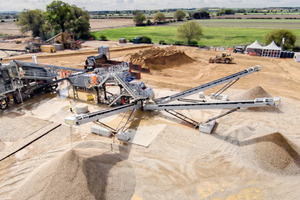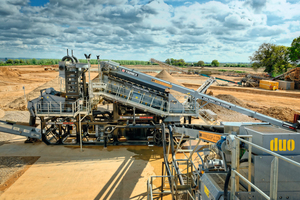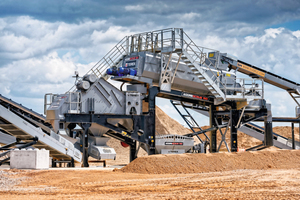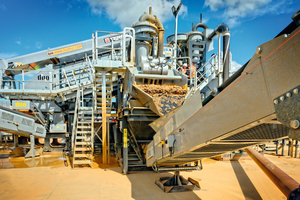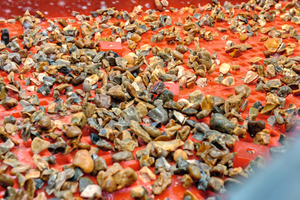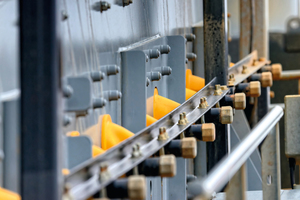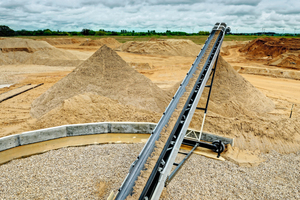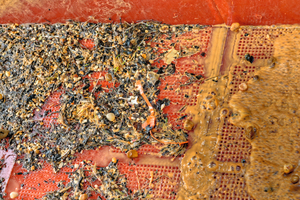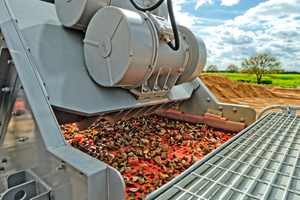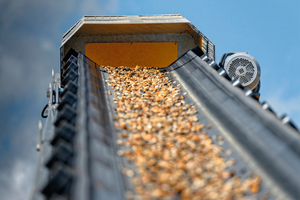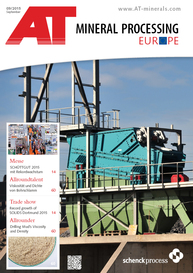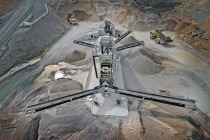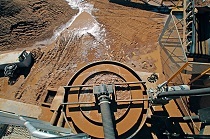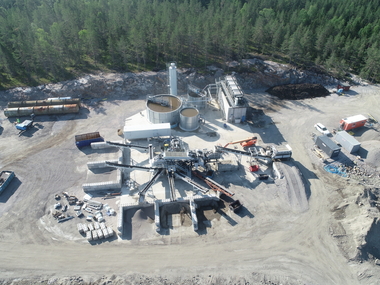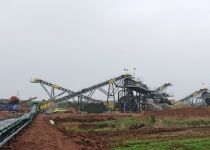New broom sweeps clean at Lafarge Tarmac
Lafarge Tarmac’s Broom South, Bedfordshire/UK, site now boosts the Terex Washing Systems (TWS) AggreSand™ 206 modular wash plant seamlessly combined with the AggreScrub™ 150 (Fig. 1).
A recent open day at Broom South provided the opportunity for customers to view the AggreSand™ 206 (Fig. 2) and the AggreScrub™ 150 (Fig. 3) seamlessly combined, processing in excess of 350 t/h and producing 3 aggregates and 2 sands. Lafarge Tarmac Regional Operations Director Andy Bate commented: “This plant has the capability to process double the capacity of the previous fixed plant. It boosts a very innovative and compact design and gives us the ability, especially on sand production, to have ultimate flexibility, so we can make two sands at varying cuts. We have a 0-4 mm concrete sand and a 0-2 mm fine sand.”
Increased Production Capacity
The AggreSand™ concept pre-wired and pre-plumbed with quick installation was particularly intriguing to Lafarge Tarmac as a solution to their specific needs. The material to be processed at Broom required scrubbing in order to produce a clean aggregate suitable for drainage, decorative stone and concrete production. The AggreSand™ 165 was originally installed in June 2014 and had been producing 1000’s of tons of quality clean aggregate and two in spec mortar and concrete sands. The continued strengthening of the UK aggregate market prompted Lafarge Tarmac management to further increase the production (Fig. 4). Lafarge Tarmac particularly liked the modular concept of the AggreSand™. TWS had just announced details of the larger capacity AggreSand™ 206 as well as the AggreScrub™ 150, which was set to be the next ideal combined solution for Lafarge Tarmac’s specific requirements.
The main inclined feed conveyor is 23 m long and is inclined at 18° and is 1050 mm wide. The conveyor is driven by two 11 Kw electric motors and Bonfigoli® gearboxes mounted on either side of the drive drum. This set up not only provides balance to the conveyor but also gives enhanced torque characteristics. Lafarge Tarmac specified the use of Cooper split bearings on this conveyor for ease of maintenance. The inclined feed conveyor has an integrated wash box complete with spray bar which pre-soaks the feed material before it reaches the rinsing screen (Fig. 5).
The AggreSand™ 206 at Broom is a three deck version which utilizes ten individually controlled spray bars on each deck (Fig. 6). The two bearing screen is fitted with polyurethane modular media on all three decks. The top deck acts as a protection deck removing any material above 80 mm. The middle deck is a 40 mm passing deck while the bottom deck is split, 2 mm and 5 mm to produce the required two sands. It is fitted with two ‘stumpy’ conveyors which deliver the over and mid-size material to two 65’ stockpiling conveyors (Fig. 7). Chute-work on the AggreSand™ 206 employs the now well tested dead-box system which results in rock on rock set-up which is proving to give excellent wear properties.
Sand Fit For A Castle
The feed material at this site has a high sand to stone ratio which translated to a sand throughput approaching 350 t/h. TWS provided an innovative solution whereby the AggreSand™ single grade 200 t/h sand plant produces the concrete sand while a TWS FM 120C is utilized alongside the AggreSand™ 206 to produce the masonry sand. Currently the AggreSand™ 206 single grade sand plant which consists of one 45 Kw 250/200 pump and two G4-660 mm cyclones is producing clean in spec concrete sand. The FM 120 which has a 200/150 30 Kw pump and one G4-660 mm cyclone is producing in spec mortar sand. These two sands are produced on a split bottom deck on the AggreSand™ aggregate screen consisting of 2 mm and 5 mm apertures.
A specially designed rubber-lined catchbox allows blending to take place so that an acceptable coarse and fine sand ratio can be achieved. The fine material is captured in one section of the two grade catchbox and piped to the FM120C’s sump tank. The material between 40 and 80 mm is washed and stockpiled and crushed periodically. The material between 5 mm and 40 mm is fed to the AggreScrub™ 150 for scrubbing and removal of clay conglomerates. The material to be scrubbed is fed via a specially extended (16 m) conveyor which safely feeds this sticky material at 17° to the AggreScrub™ 150.
Abrasive Scrubbing Action
The AggreScrub™ 150 consists of an 8 m hull fitted with two rotating shafts fitted with 30 mm abrasion resistant blades. The blades convey the material from the feed end of the scrub to the aggregate rinsing/sizing screen. As the material travels through the hull the abrasive action of the aggregate as it collides with other aggregate (stone on stone) scrubs it clean and breaks up any clay conglomerates which are then floated off through the back of the AggreScrub™. Any organics such as roots or plastics are also floated off to be dewatered over the AggreScrub’s™ 6 x 2 trash screen (Fig. 8). Underflow from the trash screen is received in a catchbox under the screen and then gravity fed to the sump tank under the hull.
Scrubbed aggregate exits the main discharge of the AggreScrub™ 150 to a 12 x 5 part rinsing screen. The initial section of this screen is fitted with spray bars to rinse off any sand/grit residues produced during scrubbing. The rinsed grit (Fig. 9) is captured in a partial catchbox under the screen and is piped to the sump tank below the hull to join the trash screen underflows. This sump tank is fitted with a 100/100 centrifugal pump which pumps this dirty water back to the AggreSand™ 206 sand plant to recover any sand and make maximum use of internal water. The two deck 12 x 5 screen is fitted with polyurethane modular media to produce 5-10 mm, 10-20 mm, and 20-40 mm clean aggregate. The three clean grades of aggregate are stockpiled using three TC6532 conveyors (Fig. 10).
Cutting Edge Control System
The control system for this specific AggreSand™ wash plant is stored in a centralized cabin on the site (Fig. 11) which is one of the options offered by TWS on all AggreSand™, alternatively the panel can be mounted onto the machine, all of which are pre-wired. The option selected by Lafarge Tarmac means that the plant is supplied wired to isolators and wired to the centralized control panel on site. This option exemplifies the flexibility of TWS and the AggreSand™ concept to suit individual customer needs or preferences.
//www.terex.com" target="_blank" >www.terex.com:www.terex.com/washing

